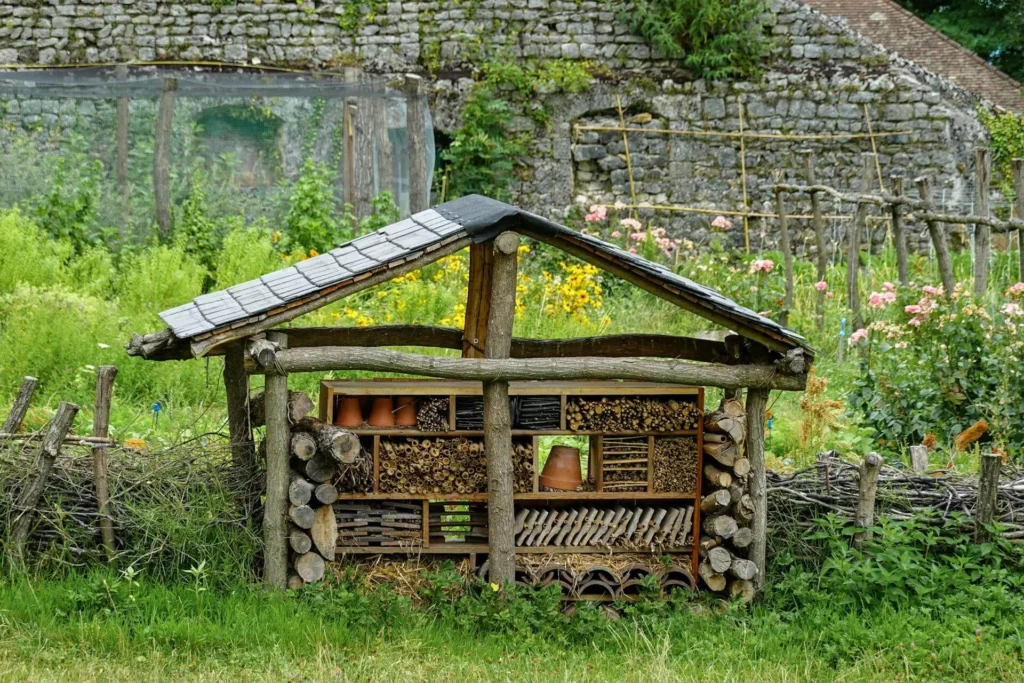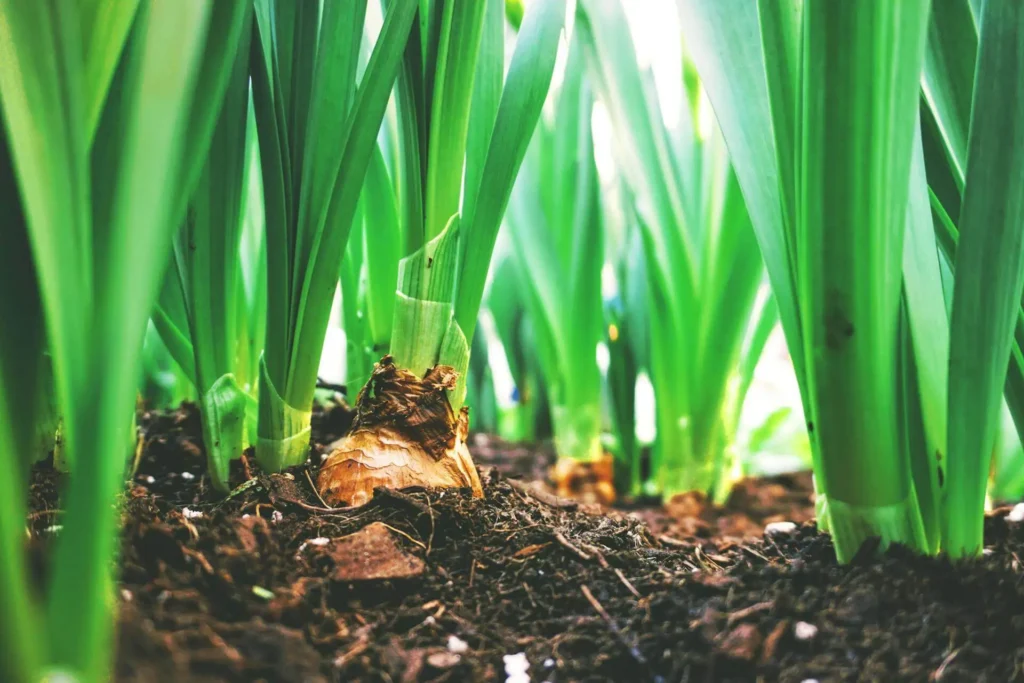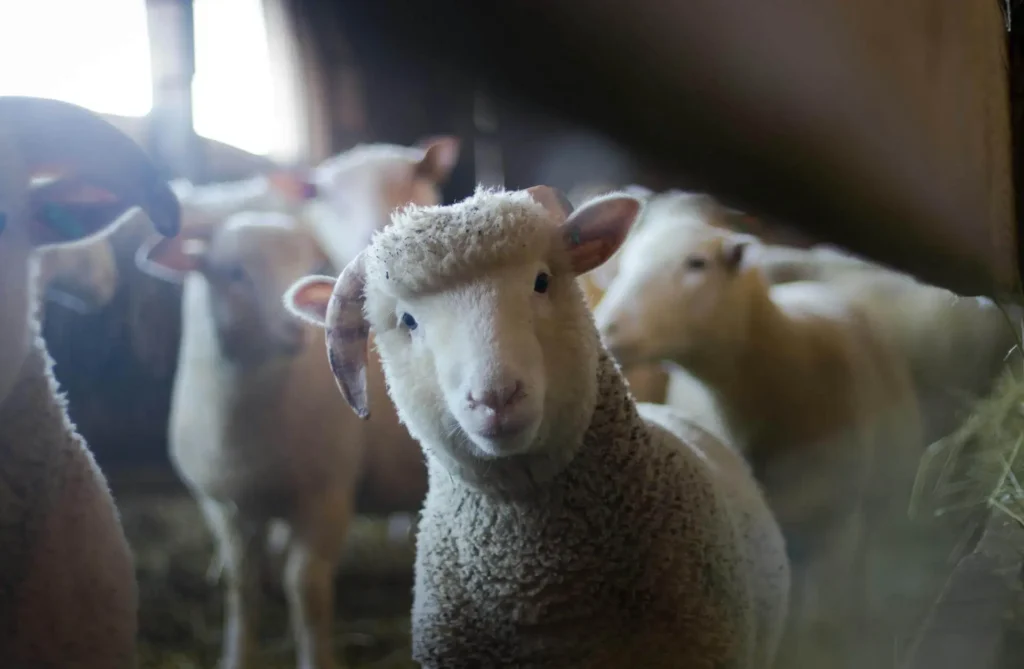In a world increasingly dominated by industrial agriculture, organic farming offers a vital counterbalance that highlights the importance of biodiversity. This article looks at how the diversity of life forms the basis for sustainable and resilient agricultural practices.
The basics of biodiversity
Biodiversity, a term used to describe the variety of life on our planet, is the foundation upon which ecological systems are built. This diversity ranges from the smallest microbe to the largest mammal, from the deepest oceans to the highest mountains. Biodiversity is vital not only to nature but also to human society. It provides us with food, medicines and raw materials, regulates the climate, purifies water and air and contributes to soil fertility. Without biodiversity, life as we know it would not be possible. It provides the basis for ecosystem services that ensure our survival and improve our quality of life.
The three levels of biodiversity: genetic diversity, species diversity, ecosystem diversity
We need to look at the three main levels of biodiversity to fully understand its role in organic farming:
Genetic diversity
This level refers to diversity within a species. Each individual of a species has unique genetic information that distinguishes it from other individuals of the same species. This genetic diversity is crucial to the adaptability and survival of species, enabling populations to adapt to changing environmental conditions and resist disease and pests.
Species diversity
Biodiversity describes the variety of species in a given area. High biodiversity means a large number of different species that together form a complex network of relationships and interactions. This diversity ensures a stable and resilient ecosystem capable of maintaining ecological functions such as pollination, pest control and nutrient cycling.
Ecosystem diversity
The highest level is the diversity of habitats, ecosystems and landscapes on Earth. Each ecosystem provides unique niches and living conditions for specific communities of organisms. This diversity of ecosystems enables a wide range of ecosystem services that support life on Earth, such as water purification, erosion control and carbon sequestration.
Biodiversity at all levels is a critical factor in the resilience and productivity of agricultural systems. In organic agriculture, this diversity is seen as a valuable resource that is used and protected to promote healthy, sustainable and resilient farming systems. By conserving and promoting biodiversity, organic farmers can strengthen the natural processes and cycles that are essential for the production of healthy and nutritious food.

The role of biodiversity in organic agriculture
Biodiversity is the backbone of organic farming as it contributes to the sustainability, productivity and resilience of farming systems. Its role can be summarised in several key aspects:
Natural pest control
Natural pest management is a key aspect of organic farming, using biodiversity to keep pests and pathogens at bay. This method promotes a healthy ecosystem that is resistant to pest infestation and minimises the need for chemical pesticides. The main strategies and mechanisms of natural pest management include:
Encouraging beneficial organisms
One of the most effective methods of natural pest control is the promotion of beneficial organisms, i.e. organisms that eat or parasitise pests. These include predatory insects such as ladybirds that eat aphids, or parasitic wasps that lay their eggs in pest larvae. Establishing flower strips or maintaining natural habitats in and around farmland promotes the diversity and abundance of these beneficial insects.
Plant health and resistance
Healthy plants are less vulnerable to pests and diseases. Organic farming promotes plant health through practices such as crop rotation, mixed cropping and the use of compost, which contribute to rich, living soils and vigorous plant development. High genetic diversity within the crops grown can also increase resistance to pests.
Mechanical and physical barriers
Mechanical and physical barriers are simple but effective pest control measures. These include netting or row covers that keep pests away from crops, and traps and barriers that trap or repel specific pests.
Biological pesticides
In situations where pests pose a serious threat to crops, biological pesticides can be used. These are based on natural organisms or their products, such as bacteria that can infect certain insect larvae or natural plant extracts that act as repellents. These products are usually specific to certain pests and have minimal impact on beneficial organisms and the environment.
Integrated Pest Management (IPM)
Integrated pest management combines different methods of pest control to keep pests at acceptable levels while minimising the impact on the environment. IPM involves monitoring pest populations, setting damage thresholds that require intervention and selecting the least damaging control methods. This strategic approach enables farmers to respond effectively to pest problems without compromising biodiversity or ecosystem services.
Natural pest management in organic farming shows how a productive and sustainable agricultural system can be created by using and promoting biodiversity. These approaches help reduce dependence on chemical pesticides, protect the health of ecosystems and ensure the long-term viability of farms.
Soil Fertility and Soil Health
Soil fertility and soil health are cornerstones of organic farming and are directly influenced by biodiversity. A healthy soil is alive and rich in micro-organisms, which are crucial for nutrient cycling and soil structure. Promoting soil health in organic farming involves various practices aimed at maintaining and enhancing soil biodiversity. Some of the main strategies are
Organic soil amendment
Adding organic matter to the soil is an important practice in organic farming. Compost, green manures and organic mulches are important sources of organic matter that improve soil structure, increase water-holding capacity and enhance soil micro-organism activity. This organic matter serves as food for soil life, leading to increased biological activity and improved nutrient availability for plants.
Crop rotation and mixed cropping
Varied crop rotations and mixed cropping reduce the one-sided stress on the soil and the number of pests and pathogens that can colonise it. These practices help to provide the soil with a diversity of root systems and organic matter, which has a positive effect on soil structure and health. Different plants release different nutrients into the soil and attract different beneficial micro-organisms, resulting in a healthier soil ecosystem.
Protecting the soil surface
Organic farming places great emphasis on protecting the soil surface from erosion and compaction. Methods such as mulching, the use of cover crops and minimum tillage help to protect the soil surface, retain moisture and improve living conditions for soil organisms. They help to maintain soil structure and promote the formation of aggregates, which are important for good aeration and water infiltration.
Promoting microbial diversity
Soil microbial diversity is a key indicator of soil health. Microorganisms such as bacteria, fungi and protozoa play a crucial role in decomposing organic matter, fixing nitrogen, releasing phosphorus and producing substances that promote plant growth. Organic farming promotes this microbial diversity by avoiding chemical fertilisers and pesticides that can harm soil life, and by using practices that support a healthy soil ecosystem.
Avoiding chemical disturbance
Avoiding chemical fertilisers and pesticides is a fundamental principle of organic farming. Chemicals can damage soil structure, disrupt the balance of soil micro-organisms and affect soil fertility in the long term. Avoiding these substances and using natural soil care methods promotes a healthy, living soil ecosystem, which is the basis for sustainable agricultural production.
Promoting soil fertility and soil health in organic farming means understanding and supporting natural processes. Healthy soil is the foundation for healthy plants, resilient ecosystems and ultimately human health. By conserving and improving soil resources, organic agriculture contributes to a sustainable future.
Plant health and growth
Diversity of plants and micro-organisms supports healthy plant growth by optimising nutrient cycling and water management. Diverse crops are less susceptible to disease and pests, resulting in more stable production. Mixed crops, where different plant species are grown together, take advantage of the complementary relationships between species. For example, some plants can repel pests that attack other crops, or take up nutrients from deeper layers of soil and make them available to shallower-rooted plants. These synergies between different plant species promote healthy growth and increase resistance to abiotic stress.
Climate resilience
Climate resilience in organic agriculture refers to the ability of agricultural systems to adapt to the effects of climate change while helping to mitigate the causes of climate change. Biodiversity plays a crucial role in increasing climate resilience by making agricultural systems more resistant to climate variability and extreme events. Some of the key strategies used in organic agriculture to increase climate resilience are
Diversity of cropping systems
Diversifying cropping systems through crop rotation, mixed cropping and agroforestry increases the diversity of ecosystems and improves their resilience to climate change. Different crops respond differently to weather extremes, so a diverse cropping system reduces the risk of total failure. This diversity also provides a more stable soil structure and better water retention, reducing vulnerability to droughts and heavy rainfall events.
Improving soil health
Healthy soils with high levels of organic matter have better water-holding capacity and are more resistant to erosion. Practices such as composting, green manuring and minimum tillage increase the soil’s organic matter content and its ability to sequester CO2. This not only contributes to climate resilience, but also to climate change mitigation through carbon sequestration in the soil.
Use of water management techniques
Efficient water management is critical to adapting to climate change. Techniques such as drip irrigation, mulching and the construction of water reservoirs help to conserve water and ensure its availability during dry periods. In addition, the restoration of wetlands and the construction of water retention basins can support natural water cycles and improve the adaptability of the landscape to changing water levels.
Promoting agroforestry systems
Agroforestry systems, which combine agricultural use with tree plantations, contribute to climate resilience by modifying the microclimate, reducing soil erosion and increasing biodiversity. Trees and shrubs provide protection from extreme weather events, improve soil structure and promote water management. They also sequester carbon, helping to mitigate climate change.
Adaptation to local conditions
Selecting crop varieties that are adapted to local conditions increases resistance to climate change. Traditional and indigenous varieties are often more resistant to local pests, diseases and extreme weather events. Preserving crop genetic diversity is therefore an important aspect of climate resilience.
Reducing dependence on fossil fuels
Organic farming aims to reduce dependence on fossil fuels by using renewable energy sources and promoting energy-efficient technologies. This not only helps to mitigate climate change, but also increases independence from energy price fluctuations and improves the sustainability of farms.
Promoting climate resilience through organic agriculture is a comprehensive approach that not only supports adaptation to climate change, but also actively contributes to its mitigation. By strengthening ecosystems and promoting sustainable practices, organic agriculture can play a leading role in meeting the climate challenges of the 21st century.
Overall, biodiversity is a key element of organic agriculture that not only contributes to environmental sustainability and improved food quality, but also plays a vital role in addressing global challenges such as climate change and food security. By promoting and conserving biodiversity, organic farmers can develop resilient, productive and sustainable farming systems that benefit both the environment and society.

Practical implementation in organic farming
Integrating and promoting biodiversity in organic farming requires targeted policies and practices to conserve and enhance natural resources. The following are some of the main approaches used in organic farming to put the benefits of biodiversity into practice.
Agroforestry
Agroforestry is an innovative agricultural practice that combines trees and shrubs with crops and livestock on the same land. As well as promoting biodiversity, it has many environmental and economic benefits. Trees and shrubs can act as windbreaks, reduce soil erosion, improve the microclimate for crops and provide habitat for wildlife. They also contribute to climate change mitigation by sequestering carbon. Biodiversity in agroforestry systems provides diversified production, which stabilises farmers’ incomes and reduces the risk of crop failure.
Crop rotation and mixed cropping
Crop rotation is a proven method of maintaining soil health and natural pest and disease control. The planned rotation of crops from year to year regenerates nutrients in the soil and minimises the spread of crop-specific pests and diseases. Mixed cropping, the practice of growing different types of crops on the same land, exploits the natural synergies between plants. This practice can improve nutrient efficiency, reduce pests and diseases, and maximise the use of available space. Both practices help maintain soil fertility and promote a healthy ecosystem.
Natural farming
Organic farming aims to integrate agricultural production harmoniously with the natural environment. This includes protecting and restoring natural habitats in and around farmland. Maintaining hedgerows, field margins, wetlands and other natural structures promotes biodiversity by providing habitats for a variety of species. These practices help control pests and diseases, support pollinators and other beneficial species, and enhance landscape diversity. They also enhance ecosystem services such as pollination and biological control, which are essential for agricultural production.
Soil management
Healthy soil is the foundation of organic agriculture. Practices such as green manuring, mulching and the use of compost improve soil structure, promote the activity of soil organisms and increase soil organic matter. These methods help to improve the soil’s water-holding capacity, optimise nutrient cycling and prevent erosion. A living soil, full of micro-organisms, is essential for the implementation of organic farming principles and supports healthy growing conditions for plants.
Integrated Pest Management
Integrated Pest Management (IPM) in organic farming uses a wide range of techniques to keep pests at acceptable levels without the use of synthetic pesticides. These include cultural, biological and mechanical methods such as crop rotation, the use of beneficial insects, physical barriers and targeted manual intervention. These approaches minimise environmental impact and promote biodiversity.
These practical implementations in organic farming show how sustainable farming systems can be developed that are ecologically, economically and socially sustainable by considering and promoting biodiversity. By using these methods, farmers can harness the benefits of biodiversity to produce healthy food, protect the environment and contribute to solving global challenges.

Challenges and solutions
Integrating and promoting biodiversity in organic farming is fraught with challenges that require innovative and sustainable solutions. These challenges range from economic constraints and lack of knowledge to social and political barriers. At the same time, creative and science-based solutions offer opportunities to overcome these barriers.
Challenges in promoting biodiversity
Many farmers are under pressure to maximise short-term yields, often to the detriment of long-term sustainability goals. Switching to biodiversity-enhancing practices requires initial investment and carries the risk of lower yields in the transition years.
A deep understanding of the ecological context and benefits of biodiversity is essential for its promotion. However, many farmers and decision-makers do not have the necessary knowledge to implement biodiversity-enhancing measures effectively.
Existing agricultural policies and subsidy mechanisms often support conventional agricultural practices that are not necessarily biodiversity-friendly. This can make the transition to organic farming more difficult.
Demand for organic and biodiversity-friendly food is growing, but is still limited in many regions. This can discourage farmers from switching to more sustainable practices.
Solutions and best practices
Providing educational programmes and resources for farmers, decision-makers and the general public can increase awareness and understanding of the importance of biodiversity. Workshops, field days and extension services can provide practical knowledge and encourage the adoption of biodiversity-friendly practices.
The creation and adaptation of agricultural policies and subsidies that support sustainable practices and biodiversity conservation is essential. This can be done through direct financial incentives for biodiversity-enhancing measures such as agroforestry or the establishment of flower strips.
Promoting markets for organic and sustainable products through marketing, certification and consumer education can increase demand. This will encourage farmers to invest in biodiversity enhancing practices.
Developing financial solutions that take into account the specific risks and needs of farmers in converting to biodiversity-friendly agriculture can provide important support. These include, for example, loans on favourable terms, insurance against crop failure and investment in research and development.
Encouraging networking and collaboration between farmers, research institutions, NGOs and government can facilitate the exchange of knowledge, experience and best practices. Joint projects and partnerships can create synergies and accelerate the implementation of biodiversity measures.
Combining these approaches can effectively address the challenges of promoting biodiversity in organic farming. This requires a coordinated approach by all stakeholders to create sustainable farming systems that benefit both the environment and society.
A sustainable future: the central role of biodiversity
The role of biodiversity in organic agriculture is crucial not only for environmental sustainability, but also for long-term food security and the resilience of our food systems. By promoting the diversity of life, we are investing in a healthier and more sustainable future for all.
This post is also available in Deutsch.

